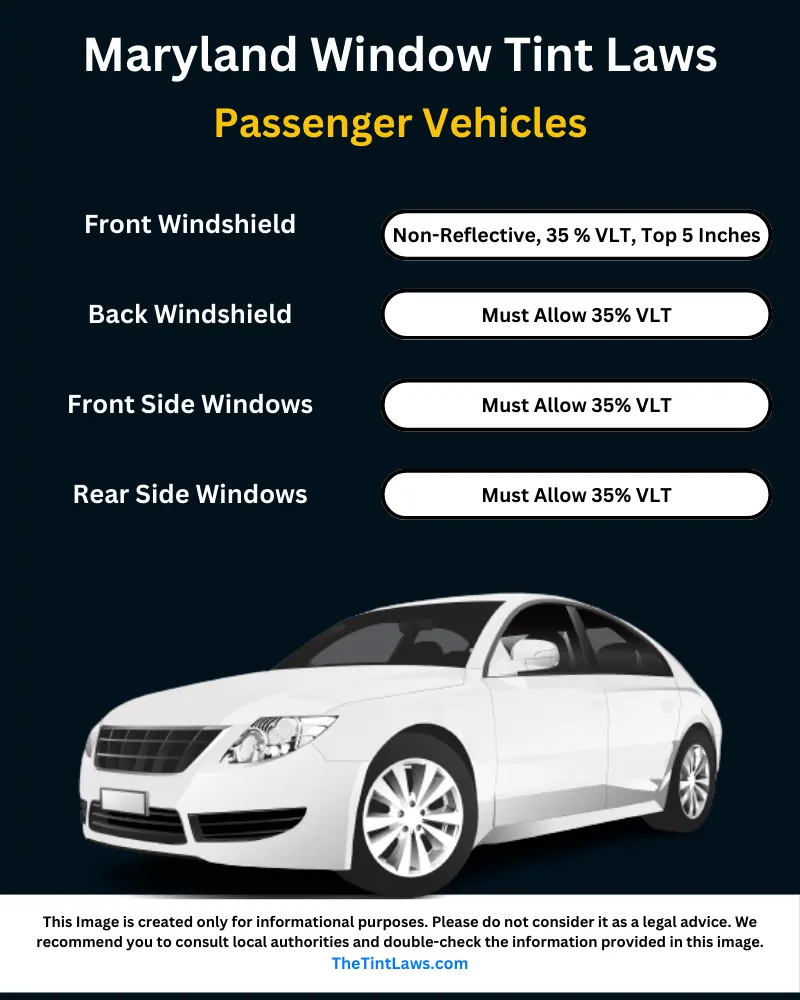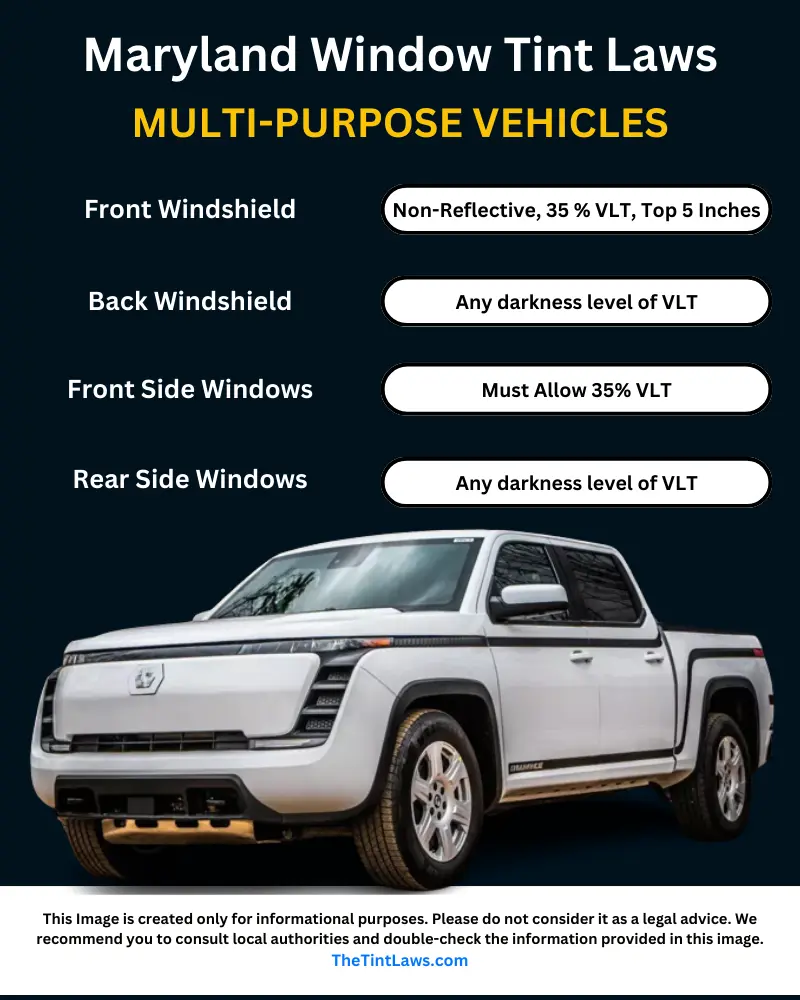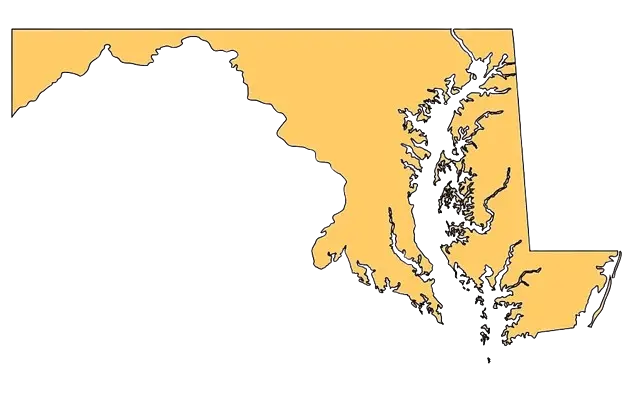Maryland tint laws were enacted in 1995. The darkest legal tint is 35% of VLT according to the window tint laws in Maryland.
How tint percentage is measured by the Maryland Tint Laws?
The legal tint darkness is measured by Visible Light Transmission (VLT), which indicates the percentage of light that passes through the film. Here’s a breakdown of the legal tint in Maryland for different types of vehicles.
Legal tint darkness for sedans:
- Windshield: Only non-reflective 35% VLT tint is allowed on the top 5 inches of the windshield (Manufacturer’s AS-1 Line).
- Front side windows: More than 35% of VLT should be allowed.
- Back side windows: More than 35% of VLT should be allowed.
- Rear window: More than 35% of VLT should be allowed.

Legal tint darkness for SUV and Van:
- Windshield: Only non-reflective 35% VLT tint is allowed on the top 5 inches of the windshield (Manufacturer’s AS-1 Line).
- Front side windows: More than 35% of VLT should be allowed.
- Backside windows: Any darkness level is permitted.
- Rear window: Any darkness level is permitted.

Important Note: It’s crucial to remember that these are the minimum VLT requirements. You can have lighter tint (higher VLT percentage) as long as it meets the legal limit. However, anything darker than the specified VLT is considered illegal.
Window Tint Reflection in Maryland:
No mirrored or metallic appearance is allowed for tinting purposes by the Maryland tint laws. Any tint with a sparkling effect and reflective window tint is prohibited for all vehicles.
Maryland Window Tinting Rules and Regulations:
- Side mirrors: Both side mirrors are required in case of rear window tint.
- Restricted Colors: It is illegal to use red, yellow, and amber colors. Any other color can be used for tinting purposes.
- Certificates: Always use the certified film. Film manufacturers need to certify the film they are selling.
- Stickers: No sticker is needed for legal tint identification.
- Penalties: A $50 citation and safety equipment repair order within 10 days. Read SERO.
Medical Exemption for Window Tinting:
Medical exemptions: Maryland auto tint laws allow medical exceptions. Drivers with medical conditions requiring protection from direct sunlight may be eligible for a medical exemption from the tint restrictions.
Download Medical Exemption Form for Window Tinting
Tint Laws Reference: Maryland Transportation Code section § 22-406: Safety glazing material in motor vehicles
Information about Maryland State
Maryland, a state in the eastern United States, shares borders with Pennsylvania, Delaware, West Virginia, and Virginia. It also has a significant coastline along the Atlantic Ocean.
Maryland is the 9th smallest US state by land area and the 19th most populous state in the USA. It is the 6th most densely populated among all of the states in America. The largest city in Maryland state is Baltimore.

Capital
Annapolis
Population
6,180,253 (2023)
Area
12,407 mi² (30,530 km2)
Cities in Maryland State
Baltimore, Annapolis, Rockville, Ocean City, Gaithersburg, Frederick, Hagerstown, National Harbor, Laurel, College Park, Bowie, Salisbury, Montgomery Village, Elkton, Kensington, Landover, Aberdeen, Chestertown, Frostburg, Cambridge, Millersville, Capitol Heights, La Plata, Lanham, Berlin, Oxon Hill, Hyattsville, Greenbelt, Cumberland, St. Michaels, Havre de Grace, Walden Farms, Bel Air, Upper Marlboro, Takoma Park, Easton, Westminster, Chevy Chase, Hanover, Sherbert, Sykesville, Hunt Valley, Oxford, North Beach, Boonsboro, Emmitsburg, Mount Airy, Chesapeake Beach.
Counties in Maryland State
The State of Maryland is divided into 24 counties:
Allegany, Anne Arundel, Baltimore, Baltimore City, Calvert, Caroline, Carroll, Cecil, Charles, Dorchester, Frederick, Garrett, Harford, Howard, Kent, Montgomery, Prince Georges, Queen Annes, Saint Marys, Somerset, Talbot, Washington, Wicomico, and Worcester.